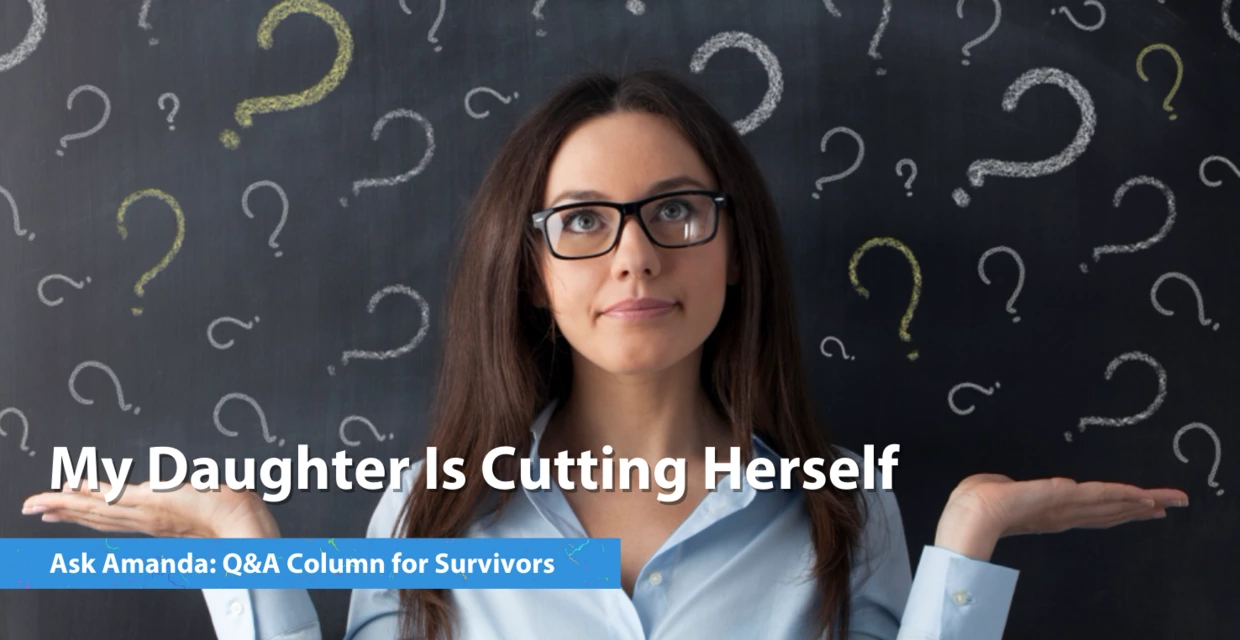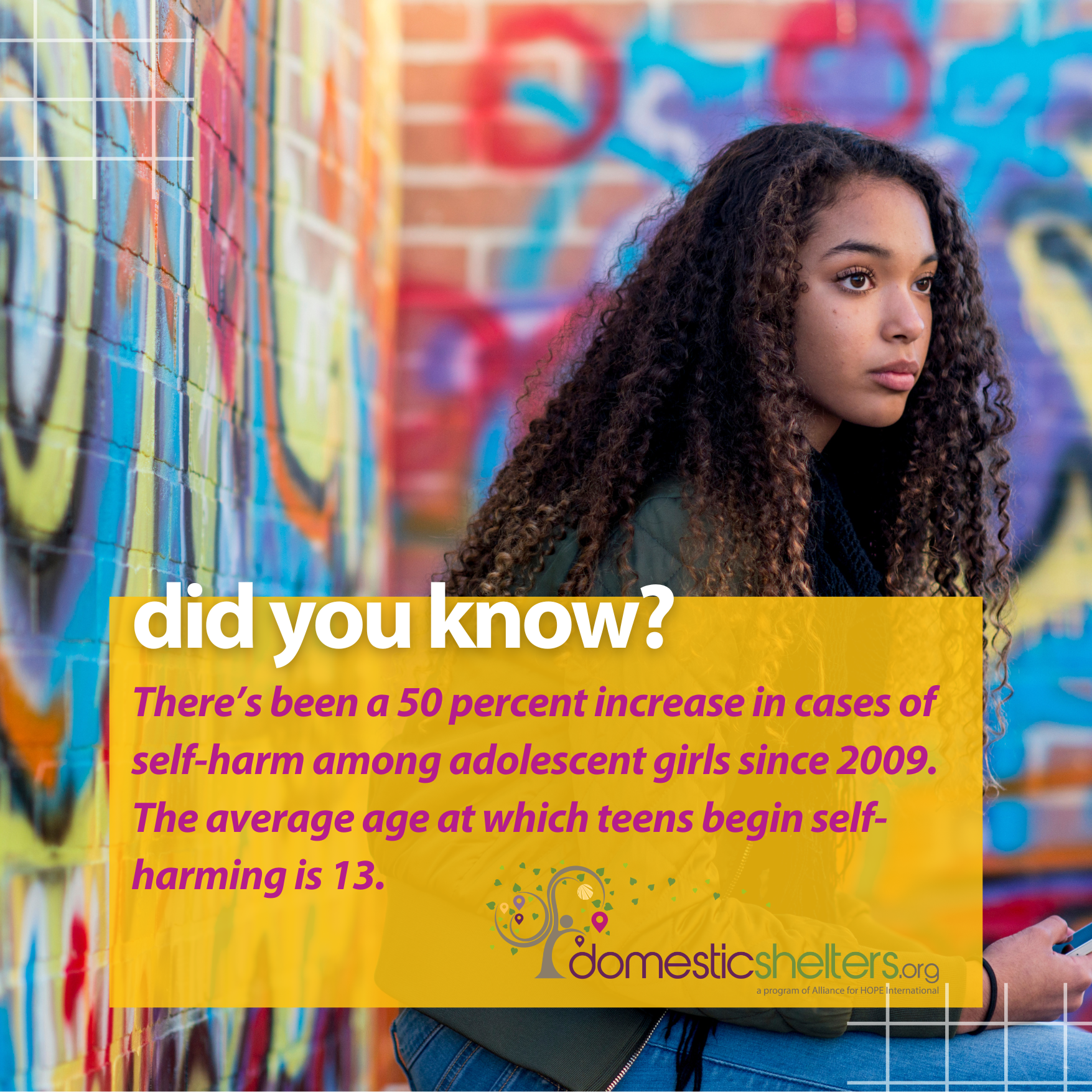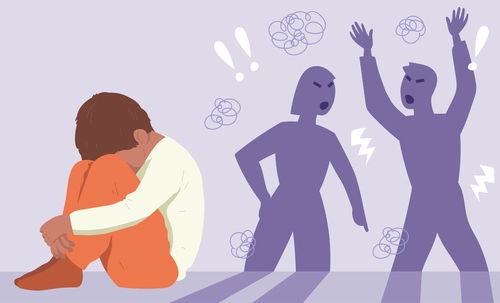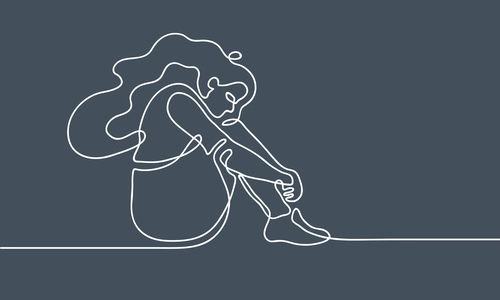1. Select a discrete app icon.

notes
Ask Amanda: My Daughter is Cutting Herself
Self-harm in teens can be a response to trauma and deserves immediate intervention
- Mar 06, 2024

Q: My teenage daughter just told me that she’s been cutting herself. Her dad and I have been going through a difficult divorce after he was abusive for most of our marriage, so I’m sure this has something to do with that. My daughter says she’s not thinking of suicide, she just cuts when she has flashbacks to his abuse. I not only feel guilty that I couldn’t protect her, but terrified that she’s going to hurt herself more, or even try to take her life. Besides counseling, what else should I be doing? I will do anything to keep her safe.
As a mom myself, I can absolutely empathize with your fear and guilt after finding out your daughter is engaging in self-harm. This coping method can definitely be a response to trauma. And living through domestic violence or child abuse is, indeed, a trauma. It’s one of the Adverse Childhood Experiences listed in the ACE study. The higher one’s ACE score, the more at risk an individual is for mental illness or chronic disease. (Find out your or your daughter’s ACE score here.) While self-harm is not a mental health disorder, it is a symptom of a psychological condition that can be the direct cause of trauma, such as anxiety, depression or PTSD.
Adolescents have the highest rates of self-harm with about 17 percent admitting to self-injury at some point in their teens. And, unfortunately, there’s been a 50 percent increase in cases of self-harm among adolescent girls since 2009. The average age at which teens begin self-harming is 13.
Here’s the rough part: Self-harm can go beyond cutting. It can also look like burning yourself, pulling out your hair, pinching yourself, slapping or hitting yourself, cutting off your flow of oxygen or poking yourself with sharp objects.
Why would someone do this? Senior psychologist Jamie M. Howard, Ph.D., with the Anxiety Disorders Center at the Child Mind Institute, explains.
“Self-harm does not mean that someone is suicidal. It means they are struggling tremendously to regulate their intense emotions. There is some research that shows that the physiological effects of pain release chemicals in our bodies that actually do help with regulating intense emotions. This highlights that self-harm is more of an attempt at regulation than ending one's life.”
ACEs researchers also say that most of the harm from exposure to ACEs comes as a result of the fear and stress abusers have caused. Your daughter’s cutting may be how she distracts herself from that stress or fear. Consider introducing some stress-reduction techniques that she may not have considered. These can include exercise (is she involved in sports?), meditation, breathing exercises, playing with a pet (use this as an excuse to add a furry family member maybe!) or yoga.

Be aware that self-harm often goes hand-in-hand with other mental health disorders, the most common being eating disorders, depression, substance use disorder and anxiety. So while it’s not a precursor to suicide, it can exist in conjunction with suicidal thoughts if other mental health conditions are present.
Here’s the good news though: your daughter talked to you about what she’s going through. Most teens will conceal self-harm behaviors, either because of shame, embarrassment or fear that they’ll get in trouble. They may believe they’re the only ones choosing self-harm. This is why it’s so vital that parents and caregivers open up those lines of communication early to let kids know that there’s nothing off limits to discuss, and that keeping secrets is way more harmful than opening up to someone.
There’s also the possibility that your daughter’s self-harm isn’t solely rooted in the domestic violence she experienced. There may be something else going on in her life. Is it possible she’s being bullied at school or is struggling with her self-image?
“Self-harm is not always a trauma response,” says Howard. “Teens—and adults —tend to self-harm when they are experiencing very intense, uncomfortable emotions. We call this ‘emotional dysregulation,’ meaning it's so overwhelming, they cannot regulate or manage their emotions effectively.”
Howard says that some people are simply born more sensitive than others, and they have a harder job when it comes to regulating their emotions.
“Sensitive means that people tend to experience more intense emotions—think 10 out of 10 rather than five or six out of 10—that last a longer time. And it takes longer for these individuals to return to baseline, compared to the average person.”
Donate and change a life
Your support gives hope and help to victims of domestic violence every day.
No matter the reason, getting your daughter help as soon as possible is the best course of action. Your response also matters, says Howard.
“Parents should intervene with warmth and love, and they should try to keep their emotional response in the moderate range, rather than a 10 out of 10. This is hard and often requires a few deep breaths and rehearsing right before broaching the topic.”
If she sees you modeling bravery in the face of this challenge, it may help her regulate her emotional response to whatever she’s feeling. I know that’s not always easy, especially considering you’re likely also suffering from trauma after escaping abuse. Make sure you’re taking care of yourself as well as your daughter in the midst of all of this. You may want to try one of these 5 At-Home Healing Techniques or consider reaching out for some support from an online group or domestic violence help line.
The next most important step is connecting your daughter with a trained mental health professional. Howard recommends a treatment called dialectical behavioral therapy (DBT), which he says is the most effective treatment for self-harm behaviors.
We offer a list of places where you can find therapists in “How to Find a Domestic Violence Therapist.”
There are also helplines specifically for teens struggling with depression and self-harm. To Write Love on Her Arms is one, YourLifeYourVoice.org is another. Dialing 988 will connect you with the suicide and crisis lifeline. These may be resources you want to share with your teen if she ever wants to reach out to talk to a trained professional. She or you may also want to speak to a domestic violence advocate to talk about the abuse you both endured—you can reach one at your local shelter through the DomesticShelters.org Get Help page.
No matter what, simply keeping those lines of communication open between you and your daughter is vital. Kudos to you for getting out and starting a safer life. It’s not always easy, but you’re doing a great job.
Have a question for Ask Amanda? Message us on Facebook, Twitter or email AskAmanda@DomesticShelters.org.
Ask Amanda is meant to offer helpful resources and information about domestic violence. If in crisis, please reach out to your nearest domestic violence shelter for the guidance of a trained advocate.
Looking for someone to speak with? Enter your location to find phone numbers for domestic violence experts in your area.
Have a question about domestic violence? Type your question below to find answers.







